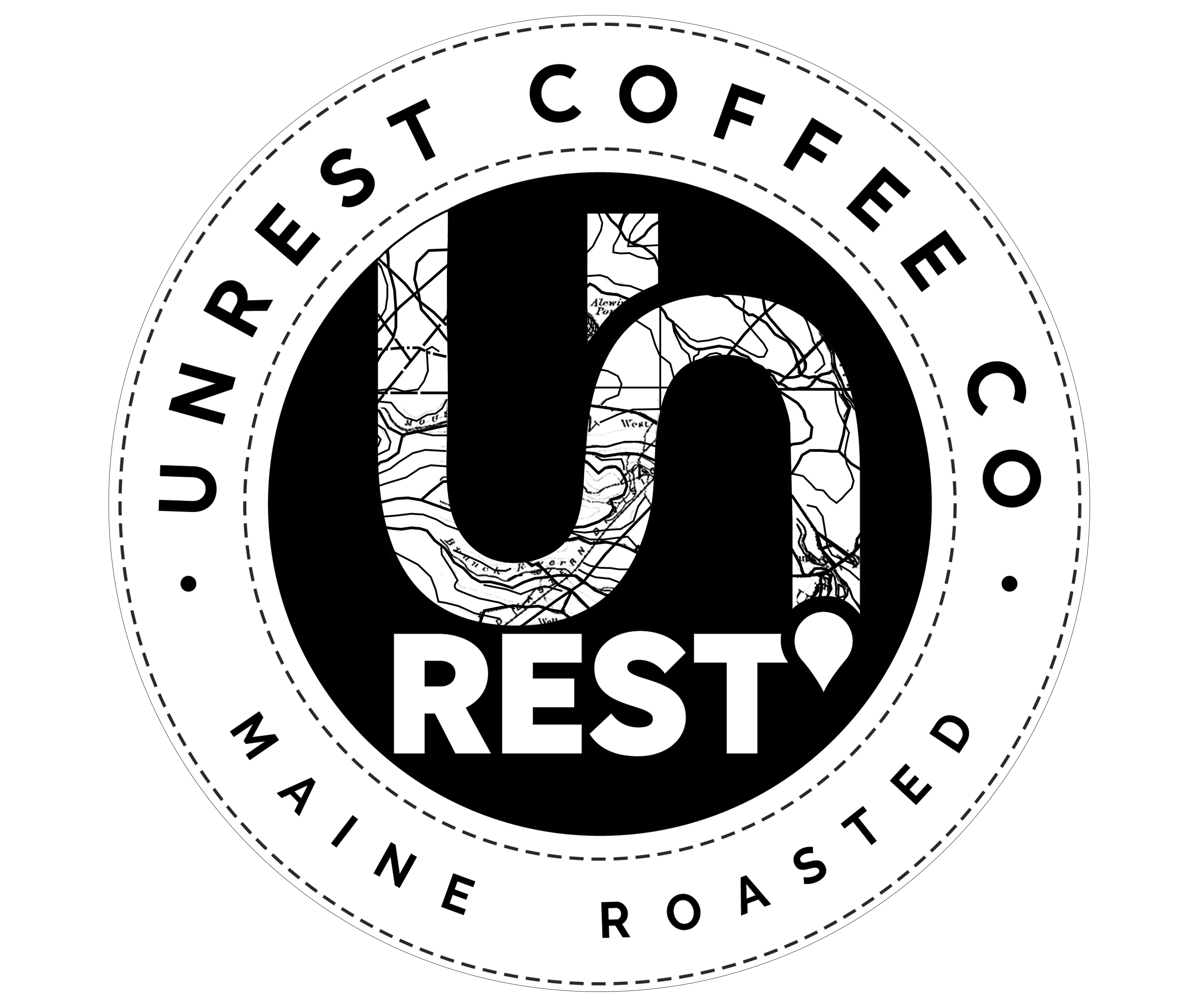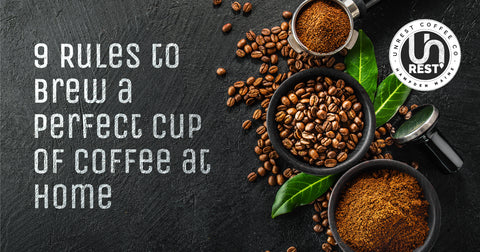We often start our day every morning with a cup of coffee. Therefore, we think a good cup of coffee is essential to set the mood for your entire day. If you have not found a coffee roaster nearby, you can always check out our online store. We are a coffee roasting company located in Hampden, Maine. We provide freshly roasted ground coffee and coffee beans, check out our wide range of coffee products here.
Often time, we recommend our customers to buy coffee beans, but it requires additional hardware at your home so you can grind the coffee beans up. The reason to buy coffee beans is to preserve the taste of your coffee and get them ground up as you go every day. However, not all of us have an all-in-one coffee machine at home, so ground coffee may be your only choice. If it is easier for you to use ground coffee, make sure you take some extra caution when storing them, so their aroma stays. Now let us look at these nine simple rules, you'll be able to make your own perfect cup of coffee every morning, right in your own home.
3 Common Coffee Brewing Method at Home
There are three most common brewing methods for coffee at home.
If using whole beans, grind the beans to a uniform consistency similar to regular table salt. Transfer the grounds into a filter-lined filter basket, then place it in the drip machine. Swivel the waterspout over the center of the grounds.
- Pour clean water into the back of the machine (not over the grounds) and press the on button.
- Turn off the machine as soon as the coffee is done brewing (it will stop bubbling) to avoid a burnt taste. Be sure to clean your machine once a month by filtering through a mixture of water and vinegar, which removes any built-up residue.
Arguably the best method for a delicious, aromatic and complex cup of coffee, the pour-over coffee maker won't disappoint.
- First, bring cold water to a boil in a kettle.
- If using whole beans, grind the beans to a uniform consistency similar to granulated table salt.
- Meanwhile, put a filter in the brewer and rinse with hot water. This removes the papery residue on the filter and warms up the brewer, keeping your coffee hot for longer. Discard the water used for rinsing.
- Add the grounds to the filter, making sure the surface is level. When the water is between 195°F and 205°F (about a minute after removal from the heat), slowly and steadily pour just enough water over the grounds to saturate them completely, starting from the middle and working your way outward. Stop pouring before the coffee begins to drip through. This is called the "bloom" pour, which allows the coffee to de-gas.
- Slowly pour in the remaining water, keeping the water in the dripper between half and three-quarters full. This should take 3 to 4 minutes. Carefully remove the filter, then serve and enjoy.
Caffeinate like a European and make your morning coffee with a French press.
- First, bring water to a boil in a kettle.
- If using whole beans, grind the beans to a consistency similar to breadcrumbs (coarser than you'd want for pour-over). The grounds should be uniform in size, without a lot of fine grit. Add the grounds to the French press.
- When the water is between 195°F and 205°F (about a minute after removal from the heat), add it to the French press and stir it vigorously into the grounds. The brew time is about 4 minutes, then slowly plunge the press, separating the grounds from the coffee.
- Serve and enjoy. Note: if you're not planning on drinking the coffee immediately, do not leave it in the French press, as it will continue to sit on the grounds and become bitter. Instead, pour the coffee into a carafe to enjoy later.
There are many other methods, but we will cover them in another article. For the sake of your curiosity, we will list them here for your reference. Other coffee brewing method includes:
- Aeropress
- Clever Dripper
- Cold Brew
- Espresso
- Stovetop
- V60
How much coffee should I add?
A general rule of thumb or the golden ratio is one to two tablespoons of ground coffee for every six ounces of water. Adjust this ratio per your taste preference. You can buy a measuring cup for more accurate measurement.
Tips for Making the Best Coffee
Rule 1: Buy Fresh Coffee Beans
Without question, coffee is best when used within days of being roasted. Buying from a local roaster (but you can roast coffee yourself right at home too) is the surest way to get the absolute freshest beans. Be wary of buying bulk coffee from supermarket display bins. Check out our coffee products fresh out of the roaster every day.
Oxygen and bright light are the worst flavor busters for roasted beans, so unless the store is conscientious about selling fresh coffee, the storage tubes get coated with coffee oils, which turn rancid. Coffee beans packaged by quality-conscious roasters and sold in sturdy; vacuum-sealed bags are often a better bet.
Rule 2: Choose Good Coffee If It's Within Your Budget
Snobbism among coffee drinkers can rival that of wine drinkers, but the fact is that an astonishing world of coffee tastes awaits anyone willing to venture beyond mass-marketed commercial brands. Specialty coffees that clearly state the country, region or estate of origin can provide a lifetime of tasting experiences. There are two major beans on the market Robusta and Arabica. Arabica beans are more widely produced, have a wider range of flavors and are generally considered the "better bean." Look for 100% pure Arabica beans. The cheap alternatives may contain Robusta beans, noted for their higher caffeine content but harsh flavors. "Nasty" is a term commonly linked to Robusta coffees by Espresso devotees. But these types of coffee can be expensive. If you're barista budget has taken a hit, there are plenty of good grocery store brands that deliver your morning buzz at half the price of fancy beans.
Rule 3: Keep Coffee Beans Fresh
Always store opened coffee beans in an airtight container. Glass canning jars or ceramic storage crocks with rubber-gasket seals are good choices. Never refrigerate (roasted beans are porous and readily take up moisture and food odors). Flavor experts strongly advise against ever freezing coffee, especially dark roasts. Optimally, buy a five- to seven-day supply of fresh beans at a time and keep them at room temperature.
Rule 4. Grind Your Own
Nothing can ruin a pot of coffee more surely than tap water with chlorine or off-flavors. Serious coffee lovers use bottled spring water or activated charcoal/carbon filters on their taps. Note: Softened or distilled water makes terrible coffee–the minerals in good water are essential.
Rule 5. Avoid Cheap Filters
Bargain-priced paper coffee filters yield inferior coffee, according to the experts. Look for "oxygen-bleached" or "dioxin-free" paper filters (e.g., Filtropa, Melitta). Alternatively, you may wish to invest in a long-lived gold-plated filter (e.g., SwissGold). These are reputed to deliver maximum flavor but may let sediment through if the coffee is ground too finely.
Rule 6. Do not Skimp on the Coffee
The standard measure for brewing coffee of proper strength is 2 level tablespoons per 6-ounce cup or about 2 3/4 tablespoons per 8-ounce cup. Tricks like using less coffee and hotter water to extract more cups per pound tend to make for bitter brews.
Rule 7. Use Good Water
Nothing can ruin a pot of coffee more surely than tap water with chlorine or off-flavors. Serious coffee lovers use bottled spring water or activated charcoal/carbon filters on their taps. Note: Softened or distilled water makes terrible coffee–the minerals in good water are essential.
Rule 8. Beware the Heat
Water that is too hot will extract compounds in the coffee that are bitter rather than pleasant. The proper water temperature for brewing is 200°F, or about 45 seconds off a full boil. (Most good coffee makers regulate this automatically.) Once brewed, do not expect coffee to hold its best flavors for long. Reheating, boiling or prolonged holding on a warming platform will turn even the best coffee bitter and foul-tasting.
Rule 9. Keep Your Equipment Clean
Clean storage containers and grinders every few weeks to remove any oily buildup. At least monthly, run a strong solution of vinegar or specialty coffee-equipment cleaner like Urnex through your coffee maker to dissolve away any mineral deposits. Rinse thoroughly before reuse.
Referenced Source: Eating Well


